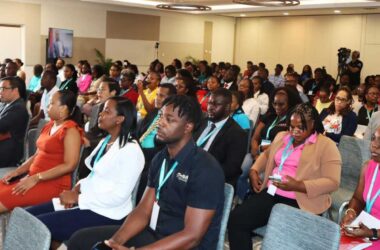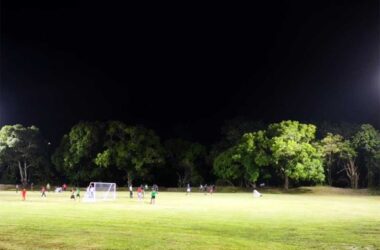![Penny Oyster (GBR) crosses the line in Saint Lucia at the end of ARC 2023 – [credit Tim Wright Photoaction]](https://thevoiceslu.com/wp-content/uploads/2024/11/Penny-Oyster.jpg)
The Atlantic Rally for Cruisers (ARC) will return to its traditional route from Las Palmas de Gran Canaria to Saint Lucia for its 39th edition, while the ARC+ rally will return to its traditional route from Las Palmas to Cape Verde and Grenada for its 12th edition.
Every year, people of all ages, from all over the world, join these rallies to sail anything from custom-built yachts to mass-produced family cruisers. With 26 multihulls registered for ARC+ and a record 46 catamarans and 2 trimarans listed for the ARC, it’s clear that multihulls are becoming more popular.
Around 1,300 people, ranging in age from nine months to eighty-three years old, are sailing aboard 94 vessels registered for the ARC+ route to Grenada and 146 yachts registered for the ARC route to Saint Lucia.
A variety of boats
From Allures to X-Yachts, the ARC fleets feature boats from more than 60 different brands and manufacturers. At the top of the manufacturers’ table are Beneteau and Jeanneau, with 18 and 16 entries, respectively. No Rush, a Southern Wind 105, is the largest yacht registered this year, while the smallest is the Hallberg-Rally 340 Aria Legra (GBR).
While ARC+ and ARC are more of cruising rallies than races, the sailors nevertheless manage to have a good time competing against each other using the handicap system that is used internally. Another option for ARC boats is to enter the IRC racing division; eleven yachts are competing in the IRC class this year.
It took George David’s Rambler 88 (USA) 8 days, 6 hours, 29 minutes and 12 seconds in 2016 to set the ARC record for the non-motorized distance from Las Palmas to Saint Lucia. Is this the year that the record is challenged?
Swan 76 La Loévie (MLT), sailed by three-time ARC racing division winner Jean-Pierre Dick, Vismara 62 Leaps & Bounds 2 (MLT), and Volvo 70 Green Dragon (AUT) are all boats that might finish first. Depending on the tradewinds, the first multihull to cross the line might be one of the three ORCs, five Outremer catamarans, or perhaps one of the two Neel 47 trimarans.
The ARC+ fleet is scheduled to arrive at Mindelo on São Vicente in the Cape Verde islands, 850 nautical miles and 5-7 days of sailing after leaving Las Palmas on 10 November. The fleet will spend 12–16 days ashore on 22 November for relaxation and exploration before setting sail westward, 2150 nautical miles (NM) to St. George’s in Grenada. The grand prize ceremony will take place in Grenada on December 12th.
The ARC fleet will set sail from Las Palmas, 2800 NM, directly to Rodney Bay in Saint Lucia on November 24. The majority of the boats will spend 18-21 days on this voyage. On December 21, the awards ceremony will be held.
Many Saint Lucians believe that the Christmas season begins when the ARC boats dock at Rodney Bay, and what better way to celebrate than under the warm Caribbean sun?







![USVI women’s national soccer team celebrates after scoring a goal Thursday against Saint Lucia [Photo credit : Daily News]](https://thevoiceslu.com/wp-content/uploads/2025/11/USVI-380x250.jpg)
![Recipients of Youth Awards at last year’s ceremony [Photo credit : MYDS]](https://thevoiceslu.com/wp-content/uploads/2025/11/Recipients-of-Youth-Awards-at-last-years-ceremony-380x250.jpg)




